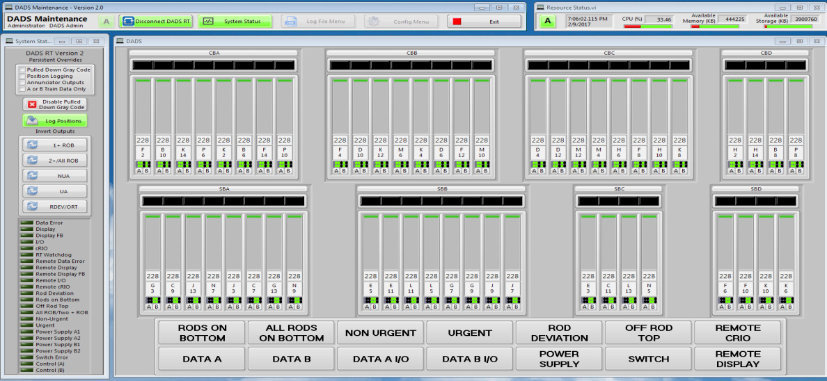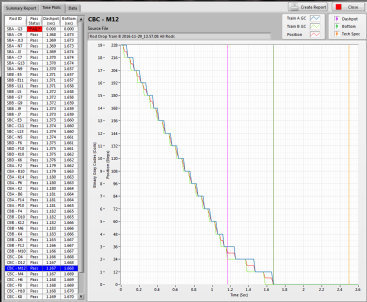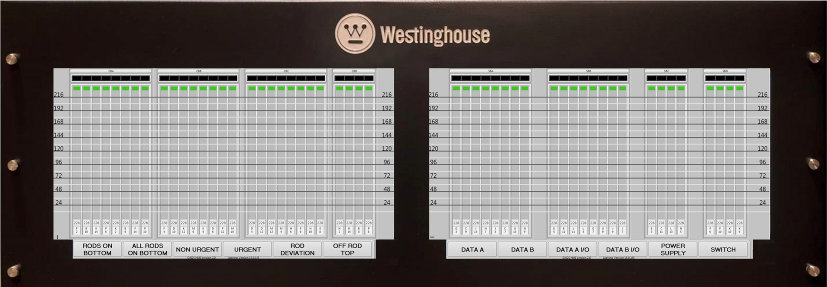
Example maintenance and data display on laptop

The Westinghouse DADS offers these benefits:

DRPI Advanced Display System (DADS)
The Westinghouse digital rod position indication (DRPI) display system has been the backbone of the DRPI architecture for more than 40 years. Recent advancements in technology have created the opportunity for the addition of advanced diagnostic/maintenance utilities, outage tools, system error detection/logging, and shorter addressing cycles with the data cabinets.
Our DRPI Advanced Display System (DADS) provides these features and functional redundancy while keeping with the fit and function of the earlier design. The Westinghouse DADS design requires no plant design changes and can be installed in a few hours.
The DADS continuously communicates with Westinghouse data cabinets using existing plant cabling to provide reliable and up-to-date rod position and alarm information to the control room and plant computer. The most essential input/output (I/O) communication and alarm calculations are managed at the component level on a field-programmable gate array (FPGA), which provides a deterministic, hardware-based performance far exceeding the original display cabinet.
Redundant drawers can each detect system or data errors and display those errors along with rod positions on two rugged 18.5-inch control room displays.
This redundant system design isolates the trains, which allows for maintenance on one train while the other train continues to display data. If a display fails, all rod positions and alarms are presented on the other display so all information is provided to the operator.
A maintenance laptop can be connected to either drawer to troubleshoot I/O or download error and history logs. Log files in DADS are captured on solid-state memory, and a complete fuel cycle worth of operational data is collected. The DADS display power supplies are hot-swappable, and both trains monitor their health.
Typically, rod drop testing is performed as a service or by a separate system, but with DADS the testing is integrated and automatic, reducing critical path time. An additional signal input from the reactor trip breaker is required to use the rod drop function.

Redundant hot swappable power supply
The maintenance laptop supplied with the DADS is a very powerful tool that can be connected online or offline. It displays rod data and alarms in the same format as the DADS display. Its advanced troubleshooting functions can easily detect faults within the system, such as a pulled down logic bit in the data cabinet, and provides flexibility to force individual rods into half accuracy mode to minimize the impact of failures. Additionally, the laptop records every system event and provides a playback menu that allows the user to view and step through past system events, such as rod position changes and alarms. The laptop has the following main features:
The Westinghouse base scope DADS is provided with the new chassis and includes redundant display drawers and redundant power supplies. We include the maintenance laptop computer and the following items:
The following items are customer dependent, and Westinghouse provides them for convenience as optional scope: